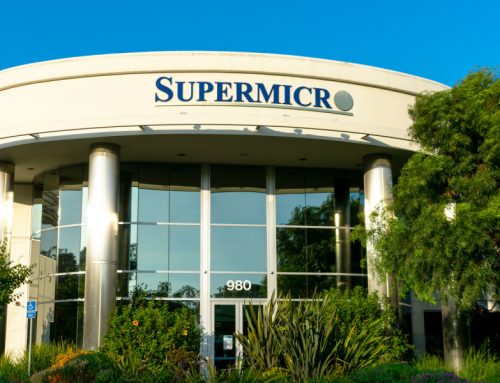by Leslie N. Masonson, MBA
My ETF post of June 12 compared the key differences between mutual funds and ETFs. One of the primary ETF differences was the lower expense ratios. This ratio is an annual fee charged to cover an ETF’s operational expenses, as well as the management and administrative costs. It is expressed as a percentage of the fund’s total assets. Expense ratios can vary significantly depending on the type of ETF, asset class, and investment strategy. For example, broad-based passively-managed market index ETFs exhibit much lower expense ratios than actively managed or niche ETFs such as leveraged ETFs.
The reason that the expense ratio is so important is that over decades the total value of your assets in your account is highly dependent on this fee. Simply put, the lower the ratio, the more assets you will have accumulated with the valuable compounding effect.
To see the substantial difference in your overall portfolio value over the years based on changing the expense ratio percentage, just plug in your numbers into this expense ratio calculator. You’ll be astonished by the results, especially with large portfolios of $100,000 or more.
Expense Ratio Comparison for Different Types of ETFs
According to ETFAction.com, the average expense ratio for the 3,132 ETFs they track is 0.55%. Looking at the top 25 ETFs with the most assets under management shows the average expense ratio ranged from 0.03% to 0.40%, with SPY at 0.09%, QQQ at 0.20%, and GLD at 0.40%. Let’s review some ETF categories regarding their ratios:
- Index ETFs: Index ETFs replicate the performance of a specific index, such as the S&P 500 or the Nasdaq 100. (Index ETFs are usually passively managed, match the index’s returns rather than outperform it). Therefore, index ETFs tend to have lowest expense ratios compared to other types of ETFs. On average, the expense ratios for index ETFs can range from as low as 0.00% to around 0.50%. The exact expense ratio will vary depending on the index being tracked, the ETF provider, and the specific fund.
- Actively Managed ETFs: These ETFs are actively managed by portfolio managers whose objective is to outperform their benchmark. Due to the extra time involved in doing more research, analysis, and having a higher portfolio turnover, higher expense ratios are charged. The expense ratios for actively managed ETFs can vary widely, generally ranging from 0.45% to 1.75% or higher, depending on asset class, and the internal staffing costs. For example, Long/Short ETFs averaged 1.3%, Buffered ETFs 0.81%, and Fund-of-Funds 1.0%.
- Leveraged ETFs: These use financial derivatives and borrowing to amplify the returns of an underlying index or asset. These ETFs provide multiple times (2x or 3x) the daily performance of the underlying index. They have higher expense ratios compared to index ETFs due to the complexity and costs associated with their leverage strategies. The expense ratios for leveraged ETFs can typically range from around 0.90% to 1.50% or more. For example, the 76 Direxion ETFs average expense ratio is 1.03% with their 3X funds averaging 0.94% to 1.46%. ProShares TQQQ (3X) has a ratio of 0.86% while the SQQQ (–3x) ratio is 0.95%.
It’s important to note that the expense ratios mentioned above are approximate ranges and can vary based on various factors, including the ETF provider, fund size, asset class, and investment strategy. I recommend that investors review the fund’s prospectus and website up-to-date information.
Additionally, it’s worth mentioning that while expense ratios are an essential consideration, investors should also assess other factors like historical performance, tracking error, liquidity, portfolio turnover in active ETFs, and the overall investment strategy of the ETF when evaluating their suitability for investment.
Other Costs to Consider
In addition to the annual expense ratio, investors and traders need to review and understand the other costs and fees associated with ETFs. Below are the other costs to examine:
- Bid-Ask Spread: This is the difference between the highest price a buyer is willing to pay (bid) and the lowest price a seller is willing to accept (ask) for an ETF share price. The spread is determined by the market makers and is based on a number of factors including trading volume, time of day, the number of market makers and the risk of the underlying portfolio. The spread on very active ETFs can be in a few pennies, while less active ones incur larger spreads.According to Yahoo the average ETF spread is 0.25% while the median is 0.14%, but investors need to check out any ETF to see the actual spread. Note that spreads may be higher in the morning as the market opens and near the close. Also, limit orders can be used, or placing an order between the bid-ask may work well.
- Brokerage Commissions: Most large and discount firms offer free ETF trades, and other firms charge for them. Commissions may be charged for different types of orders, so ask your brokerage firm if there are any charges with the ETFs you invest in or trade, and if so, you may want to move your ETF. Years ago, firms were charging between $5 and $10 per trade, and back in the 1980s, the lowest commission was around $45, so investors have greatly benefitted by the “no” commission state of affairs.
- Brokerage Account Maintenance Fees: Brokerage clients may be charged monthly account maintenance fees and/or have minimum account balance requirements. They can vary greatly among brokerage firms. Investors should do their research such as read Barron’s annual review of brokerage firms to compare them and select one with the lowest overall charges. Additionally, visit the brokerage firm’s website for complete details.
- Net Asset Value (NAV): ETFs trade near their NAV, which is the underlying value of the fund’s holdings at a point in time. As a result of supply and demand the prices can diverge from NAV. These premiums or discounts impact an investor’s return. To minimize this impact Investors should use ETFs that have high trading volume (e.g., 500,000 shares a day or more), avoiding trading pre-mark or after hours, and using limit orders.
- Securities Lending Fees: Some ETFs engage in securities lending to generate additional income. Typically, the ETF lends the underlying securities to short sellers or other market participants for a fee. While this activity can enhance the fund’s returns, it has risks. Therefore, investors should review the prospectus to understand its impact and how it works, and the risks associated with it.
In summary, before investing or trading any ETFs, investors and traders need to educate themselves about all the costs and fees associated with ETFs that can impact their bottom line, whether domiciled in regular or retirement brokerage accounts. Knowledge is power, and can save you money. Next week’s ETF article will focus on the ETF screens and searches available in VectorVest, and then in subsequent articles, a more in-depth review of the ETF Viewer, ETF Watchlists, and ETF UniSearches.
Want These Types of Insights at Your Fingertips so You Can Win More Trades?
Use VectorVest to Analyze any stock free. VectorVest is the only stock analysis tool and portfolio management system that analyzes, ranks and graphs over 18,000 stocks each day for value, safety, and timing and gives a clear buy, sell or hold rating on every stock, every day.
Before you invest, check VectorVest! Click here to ANALYZE ANY STOCK FREE and see our system in action!











Leave A Comment